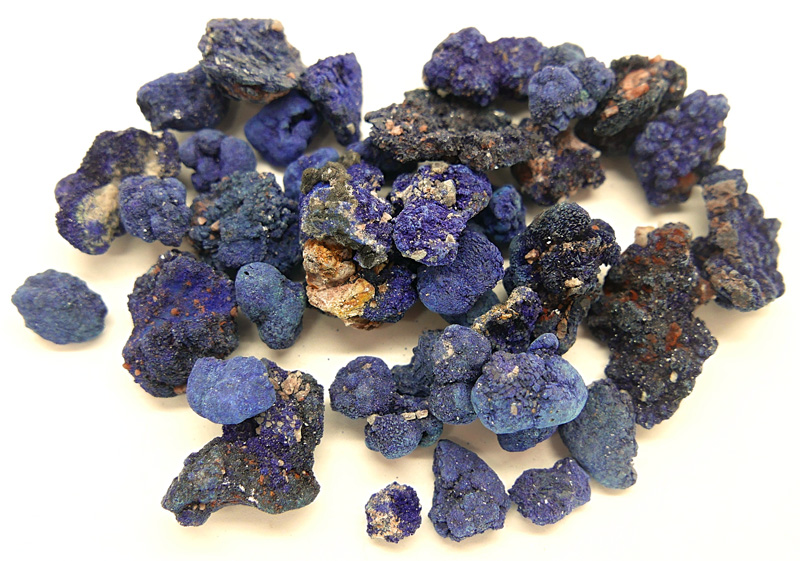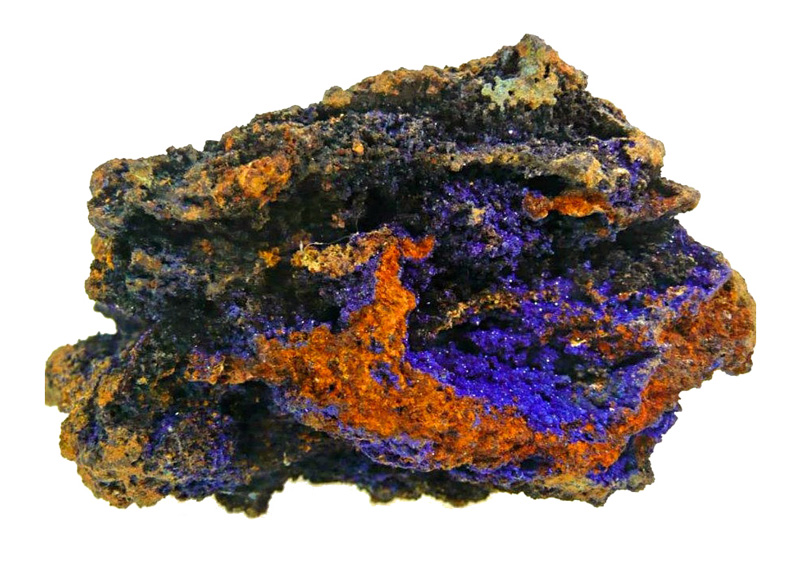

PHYSICAL PROPERTIES
- GROUP Carbonates
- COMPOSITION Cu3(CO3)2(OH)2
- COLOR From light blue to dark blue
- CRYSTALLINE SYSTEM Monoclinic
- CRYSTALLINE HABIT Tabular, prismatic
- HARDNESS 3.5 - 4
- FRACTURE Conchoidal, brittle
- EXFOLIATION Perfect
- GLOSS Vitreous to dull to earthy
- STRIP Blue
- TRANSPARENCY From transparent to translucent
- SPECIFIC WEIGHT 3.8
- REFRACTIVE INDEX 1.73 - 1.84
MINERALOGICAL CHARACTERISTICS
The azurite is a copper carbonate with a dark and intense blue color. Its name comes from the Persian word “lazhward”, which means “blue”. It forms in the oxidized areas of calcium deposits, due to the action of carbonated water on the copper minerals. It is usually found together with the malachite or cuprite. It appears in the form of prismatic or tabular crystals, and also in massive, stalactitic and botryoidal habit.
The azurite can slowly transform into malachite due to chemical processes and the action of oxidation. At first glance, what we can see in this transformation is the color change, which goes from dark blue to dark green. Azurite dust is toxic, so its inhalation or ingestion must be avoided. Azurite was formerly mined to be used as copper and also to make pigments. There are works of art from the 15th, 16th and 17th centuries painted with azurite pigments.
Deposits: France, Namibia, Peru, United States, Australia, Morocco, Greenland, Chile, Namibia, Canada, Russia, Egypt and Afghanistan.
THERAPEUTIC PROPERTIES
The azurite is considered a stone of personal and spiritual development. It is said to have an intense vibrational frequency that can help undo limiting mental and emotional structures. It enhances intuition and favors the meditative state. Azurite is used to calm stress and worry, as well as to promote understanding and clarity of thought. It is recommended to exercise memory and concentration capacity.


